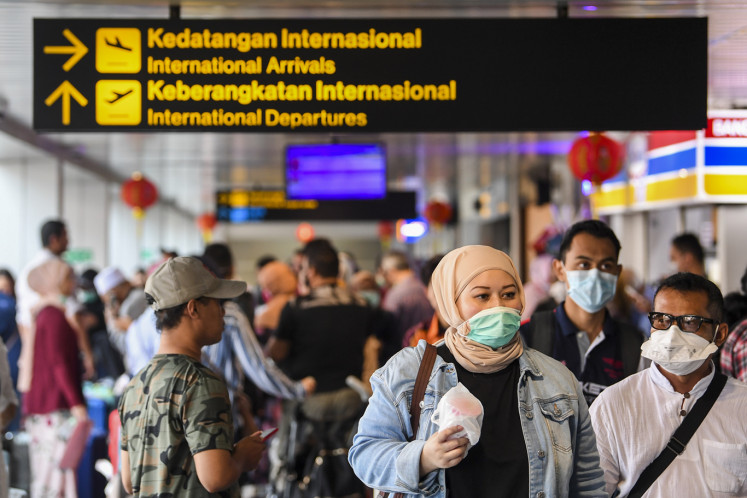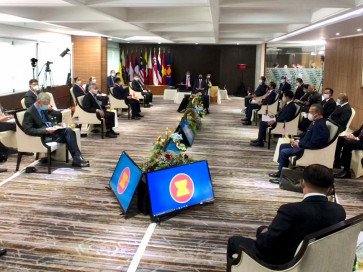Popular Reads
Top Results
Can't find what you're looking for?
View all search resultsPopular Reads
Top Results
Can't find what you're looking for?
View all search resultsASEAN stewardship in an uncertain world
Various ASEAN instruments continue to guide regional integration and community building, from the ASEAN Charter to the successive ASEAN Community Visions and the corresponding blueprints.
Change text size
Gift Premium Articles
to Anyone
C
all it the polycrisis, the perfect storm, or the 5Cs (COVID-19, conflict, climate change, commodity prices and cost of living). There is little debate that the world is becoming more uncertain. For an intergovernmental organization like ASEAN, the challenge is to manage and respond to the multidimensional crises while maintaining focus on the long-term vision, staying relevant and on course.
With its diverse membership, in terms of political systems, economic structures, cultures and levels of development, keeping all 10 countries together is no small feat. Some opportunities and challenges are shared, justifying collective actions, but priorities and concerns may vary, at least in the short term.
The current widespread inflationary concern, for example, has a differing impact between net food and energy importers and exporters. Similarly, while the threat of climate change is shared, short-term opportunities may vary albeit they can be complementary – some are keen on utilizing their resource assets while others their technology and investment management capacity.
Various ASEAN instruments continue to guide regional integration and community building, from the ASEAN Charter to the successive ASEAN Community Visions and the corresponding blueprints. Progress in ASEAN community building, however, depends on the more grounded implementation of its various agreements and initiatives, and is increasingly affected by complex challenges both external and internal.
Here, the contribution of and synergy between the ASEAN chair and the ASEAN Secretariat in stewarding the region’s directions, processes and progress are key and unique to ASEAN’s success. Of course, this is in addition to the critical role played by others in the ASEAN machinery, including the fellowship among regional leaders that extends far beyond their interaction in official meetings, the community councils, the sectoral ministerial and senior official bodies and the Committee of Permanent Representatives based in Jakarta.
So why do the chair and the secretariat play such important navigational and stewardship roles in the region? The annual rotation of ASEAN chairmanship means that the chairing country leads the framing of ASEAN’s response to emerging issues of the day, at times unanticipated in, and on top of, the community’s long-term directions. The chair may do so by proposing deliverables to be prioritized in the coming year; some taken and given added emphasis from the existing work plans while others newly introduced and deemed necessary given the latest developments.
In the ASEAN Economic Community, for example, the respective chairs have been critical in elevating the issues of digitization and the Fourth Industrial Revolution, crisis or pandemic response, and more recently the decarbonization agenda that were not as prominently reflected in the 10-year blueprint adopted in 2015.
















